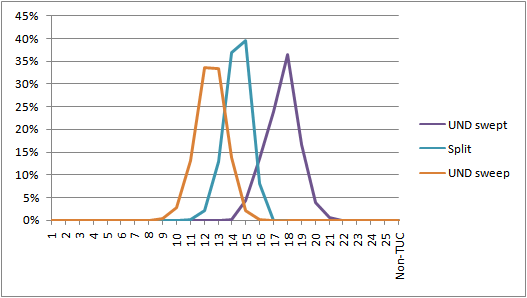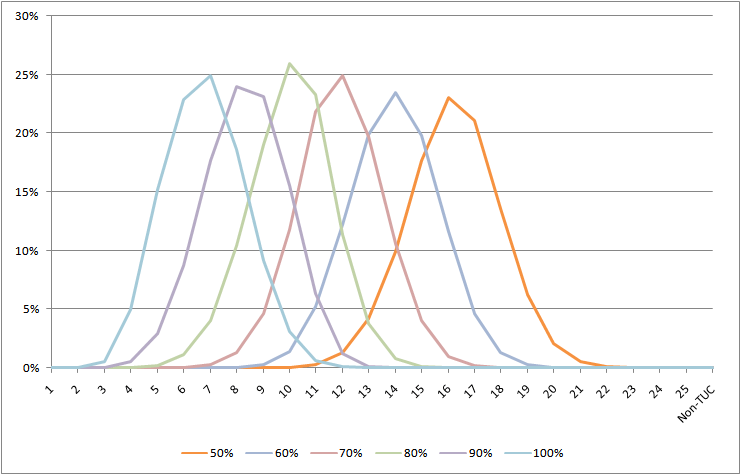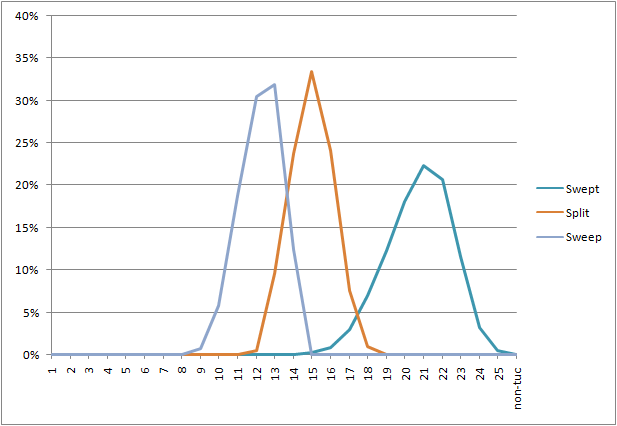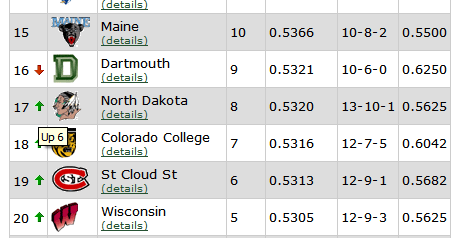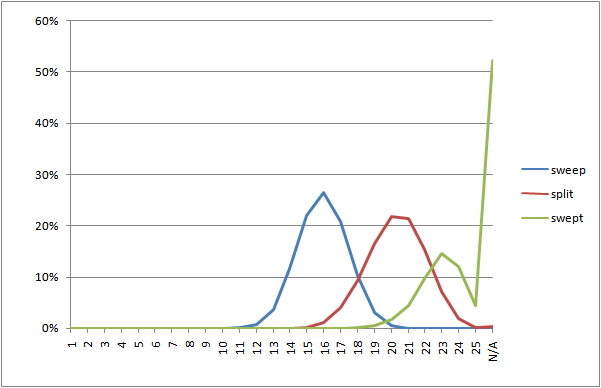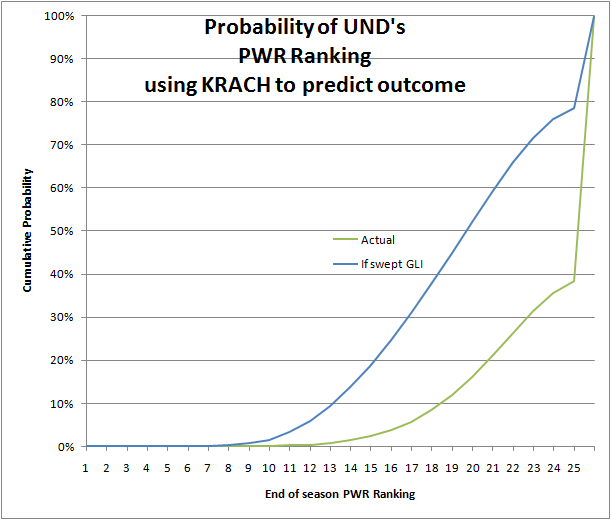Another slow start for the Sioux hockey team has led to inevitable comparisons with years past. But there’s a feeling among some that key losses have led to a deeper hole this year that will be more difficult to climb out of with a second half surge.
2008 start vs past seasons
| Season |
PWR |
RPI |
Win% |
KRACH |
Out of
Conference
Games |
| 2008-12-08 |
n/a |
#26 (.5124) |
.4688 |
#22 |
L – Boston Univ.
L – Massachusetts
W/L – Cornell
W/W – Harvard |
| 2007-12-10 |
#7 |
#8 (.5689) |
.5667 |
#6 |
W – Michigan St.
T – Boston Coll.
W – Northeastern |
End of 07-08
reg. season |
#4 |
.5866 |
.7143 |
|
|
| 2006-12-11 |
#20 |
#22 (.5251) |
.4688 |
#13 |
W/W – Quinnipiac
L/L – Maine |
End of 06-07
reg. season |
#6 |
.5497 |
.5972 |
|
|
| 2005-12-12 |
#17 |
#15 (.5327) |
.5833 |
#13 |
W – Miami
L – Michigan St.
W/W – Northeastern
W/T – New Hampshire |
End of 05-06
reg. season |
#12 |
.5475 |
.6220 |
|
|
This seems to be UND’s worst start in the past four years. The Sioux have a win% equal to the previous low for this point in a season — 2006-07. UND’s RPI this year is lower than it was 2006-07, and KRACH rates the Sioux as a significantly less competitive team than they were at this point that season.
However, that season did include two early losses vs. Hockey East (both to Maine), and a PWR ranking of #20 at this point in this season. The Sioux rallied by the end of that regular season to finish #6 in the PWR, demonstrating that it is possible to climb out from such a hole.
Chart of UND’s 2006-07 PWR comeback
Can the Sioux still make the NCAA tournament?
In short, yes. Over half the season remains to be played! The rest of this post will look at the impact of the season to date on contributors to the PWR and future opportunities to influence contributors to the PWR. It is not meant to encourage anyone to worry much about UND’s current position in the PWR, which is quite meaningless.
Winning percentage
As an upper bound to the potential for a turnaround, consider Spring of 2008 in which the Sioux posted an amazing 18 game undefeated streak, never losing from January 5 until the playoffs. Taking the 2007-08 record over their last 22 games (16-3-3) and adding it to this year’s tally (7-8-1) would result in a final record of 23-11-4.
That would give the Sioux a regular season win percentage of .6579.
RPI
Assuming UND’s past and future opponents remain of constant quality until the end of the season, UND’s RPI from a win percentage of .6579 should be about .56. That would place UND at #11 on the current RPI chart. See other RPI scenarios under “Future RPI” on the North Dakota Hockey RPI Details page. If, instead, UND won about 13 of its remaining 21 games*, it would end the season with a win percentage of .5541 and an RPI of about .5356, currently good for 20th in the NCAA.
*That page shows only 21 remaining games for UND, though there will certainly be a 22nd, because the second opponent for the Great Lakes Invitational is not yet known.
PWR components
If the season ended today, UND wouldn’t be a TUC because it’s not in the top 25 of RPI, so would not be ranked in the PWR.
Current record vs. TUCs: 4-7-1
Remaining games vs. current TUCs: 14 (Minnesota 2, Denver 2, St Cloud St 4, Wisconsin 2, Colorado College 2, Mankato 2)
UND’s non-conference losses to Hockey East teams will hurt its COP comparisons to Hockey East teams, though UND has ample opportunity to shore up its COP comparisons to Western teams. UND has a large part of its WCHA schedule ahead of it; the Great Lakes Invititational (including Michigan St. and potentially Michigan) will position UND vs. the CCHA.
If UND averaged .600 for the rest of the season (RPI of about .5356 #20), it would result in a TUC of 12-13-1 (if that percentage is applied across TUCs); .800 (RPI of about .56 #11), would result in a TUC of 15-10-1 (ceteris paribus), and position UND well for H2H and COP comparisons with WCHA teams.
Tournaments
Of course, UND’s opportunities don’t end with the regular season. Every team in the WCHA gets at least two WCHA Final Five play-in games. All-in-all, the Final Five could add up to six games to UND’s schedule. Finally, winning the tournament would guarantee an NCAA tournament berth, regardless of previous performance.
